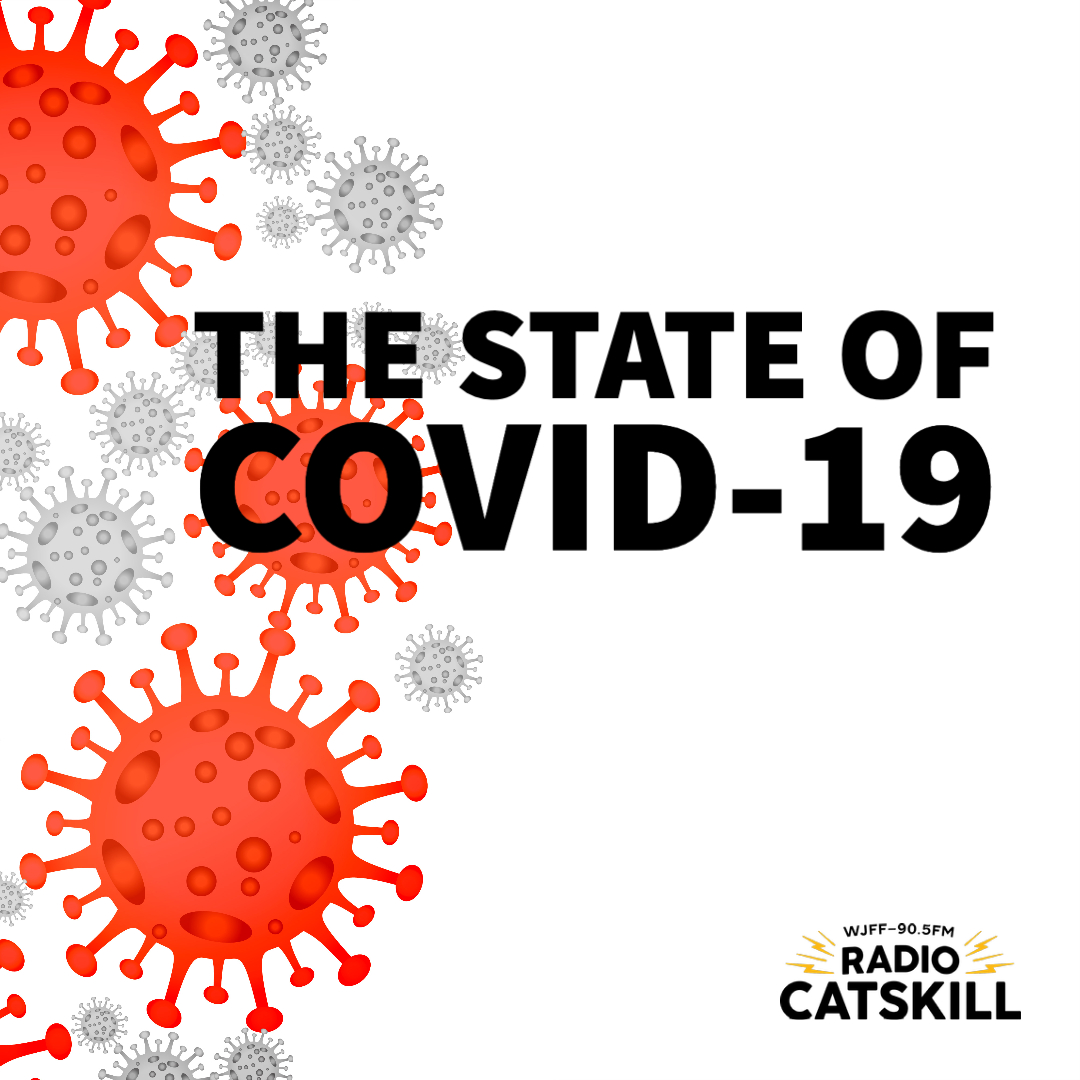Story by Patricio Robayo
Listen Here:
 A surge of positive COVID-19 cases is becoming a common trend after a major holiday. Where folks gather and mingle, a wave of positive COVID-19 cases follows.
A surge of positive COVID-19 cases is becoming a common trend after a major holiday. Where folks gather and mingle, a wave of positive COVID-19 cases follows.
We are two years out from the start of the pandemic; what’s different? What have we learned?
Recently the Centers for Disease Control has been recommending that vaccines be issued more on a yearly basis, much like the flu vaccine, instead of when a new variant emerges.
U.S. Food and Drug Administration recently voted that in the future, anyone who has a primary covid vaccine will receive the bivalent vaccine instead of the original formula.
According to the New York State Department of Health, the new variant, XBB.1.5 has been found at the highest rates in the New York City, Long Island, and Mid-Hudson regions.
These regions have also experienced the most elevated case rates in New York State since November 2022.
But what about the current variant XBB.1.5? Is it more dangerous, and why does it seem more transmittable?
Dr. John Moore, a Virologist with Weill Cornell Medicine in New York City, says the virus has become more transmittable since Omicron first surfaced in the United States.
“These viruses are increasingly transmissible, and they have a greater ability to infect cells in the nose and take root in the body. They also particularly have a greater ability to break through anti-body protection that’s been conferred by vaccination, previous infections, and both together. We’ve seen this trend, and it’s a continuing trend, and it will probably continue to be a continuing trend.”
However, while this new variant is more contagious, Dr. Moore says, it’s not any more lethal than previous variants.
“The common tendency is to have a few bad days at home. And you can see sore throat, perhaps a runny nose, some coughing, but it is very rare for healthy people, or previously healthy people, to end up in the hospital, or worse,” added Dr. Moore.
Dr. Moore says those who do end up in the hospital are older adults and those with pre-existing conditions.
“Something we’ve seen throughout the pandemic is that the more vulnerable people are the ones who suffer worst. They are, of course, the ones who most benefit from vaccine protection,” said Dr. Moore.
According to the New York State Department of Health, 76 percent of New Yorkers have completed their primary vaccines. In Sullivan County, it’s around 61 percent of the population.
So why is the virus still mutating, and why does it seem like it is doing it at a fast pace?
Dr. Moore says the virus’s main goal is to replicate and finds new ways to become stronger.
“The driving force is for a greater ability to infect more people. And that can occur in multiple ways, but the two most common ways are to increase its ability to infect cells in the nose so that less virus is needed to infect the person. So if somebody sneezes out the virus near you, you’ll breathe some of it in, and a more transmissible variant will take root. If you breathe less virus in, if you were further away, or if somebody coughed out or sneezed out a little bit less virus, it can still be a risk.”
As more and more people become infected, the virus tries to fight its way around the antibodies and continues mutating.
While people are still being infected, Dr. Moore says the difference this time around, fewer people are dying in the hospital.
“Those antibodies and other immune responses are still very effective at protecting against serious disease and death. So they’re less effective at stopping infections, but they are still very effective at keeping people alive and out of the hospital. But we see more infections because of these factors.”
The Centers for Disease Control and Prevention are recommending changes to the vaccine schedule going forward, signaling a shift from an emergency response to a more long-term plan.
Dr. Reena Patel, Medical Director for Garnet Health Urgent Care, says she thinks it’s a good idea that the CDC is recommending this change.
“For me it just makes sense,” said Dr. Patel.
“Because if it’s changing, we need to change with it to protect ourselves. This is really big with our vulnerable population, and people who have comorbid conditions who have other medical histories that will make it a little harder for them to get past the virus or could be potentially hospitalized, whether or not they have the vaccine. You need everything on your side. If they do end up coming up with an annual recommendation, I will support it because it makes sense to me.”
Dr. Moore said their arguments are being made on both sides; some agree there needs to be a change, while others are against the transition.
“There’s a considerable amount of divergent opinion on what should be done. There are people who’ve already one of the proposals is to make an annual booster that would be given every September and October. Some people are arguing that that is not a good idea because they think that they should be more frequent boosting, say every six months. Other people disagree with that some people are arguing that the composition of the vaccine needs to be changed, other people think that would not be particularly helpful. So it’s quite complicated. But there’s certainly a lot of ideas out there, some of which are more practical and others and we I think we just have to see what happens in the next several days.”
We are over two years into the pandemic. When the CDC first recommended masks to help combat the virus from spreading, before the COVID-19 vaccines, masks were very hard to come by. Online stores and distribution outlets raised prices as supply was limited.
But now, you can find maks anywhere you go, and there is no shortage of them. What part do masks play in this current time of the pandemic?
Dr. Patel says she is all for masks during large group gatherings, and they are still required in medical offices.
“I 100 percent feel it really important when you yourself don’t feel well, just to be safe to wear a mask, you know, whether you did it at home COVID test that was negative, or you were seen by your regular doctor, if you have a cough, if you have a sneeze, if you’re not feeling well, it’s just respectful of yourself and to others to wear a mask to prevent the spread of disease because masks do show efficacy. Nothing is 100%, but masks are helpful. So I definitely still see them playing a role in our current lifestyle and in the future, to be honest with you.”
Dr. Moore says masks do work, but there is an increasing number of people who want to avoid wearing a mask in certain situations.
“That’s a strange feature of our society. And we’re all in this. I mean, I don’t wear a mask. In many places where common sense of I probably should, we don’t. And yet, in Asian countries mask, wearing has been absolutely standard behavior. We have to ask ourselves, what do we want here? Do we want the inconvenience of wearing a mask? Or do we want to get sick?”
Recently hospitals and urgent cares in our area had to turn away some patients because of the bottleneck of folks who came in with symptoms of COVID-19, RSV, or Flu.
“During the holidays, we did have to hold back on registration quite a few times because we were just getting a bottleneck of patients signing in. I think that just kind of reflects on people who just wanted to be responsible, and they wanted to get tested and make sure if they were experiencing some symptoms, it wasn’t something that could potentially be detrimental to themselves or somebody else.”
Dr. Patel says she was seeing young patients who were infected not only with COVID-19 but also with RSV.
“We just had to be so much more careful in educating our patients and letting them know everything they could do at home, you know, to have the best ability to overcome the, you know, temporary illness that they were dealing with. So it was a lot more phone calls a lot more education, and a lot more questions, because this was new for everybody.”
When the vaccine was released, some people across the country were against the vaccine providing false information on websites and social media. According to Dr. Moore, the anti-vaccine movement has caused many unnecessary deaths in his option.
“The anti-vaccine campaign has led to the deaths of hundreds of 1000s of Americans, and that’s a national tragedy. The vaccination campaign has saved well over a million American lives and well over a trillion dollars in health care costs. It’s been a huge success, and yet it’s being trashed by people with an evil agenda. And that evil agenda has killed a lot of people,” said Dr. Moore.
Dr. Patel says those patients who were not vaccinated were suffering more in hospitals.
“People that were not vaccinated were suffering more on the inpatient hospitalized side. I feel more so for the people that were misled or misguided by that movement.”
Because of the anti-vax movement, Dr. Patel said it made fighting the viruses that much harder.
“Being a physician, a lot of trust was lost. I think we’re in we’re in a better place now. I think we all just tried our best to be honest with you. And it just made it a little bit harder to get to where we are today. It was almost like another wall when we had a potential for something that was… even though it was new…it was helping us.”
Going forward, COVID-19 will be part of our lives, much like the flu and the common cold. We need to learn how to live with it yet still be protected.
Dr. Patel says as time goes on and as more and more research is done, we will be better prepared to fight infections.
“We are more prepared with this variant; we are in a better position than we have previously been. I do still think vaccines are effective at preventing infection. And in most individuals, they’re very effective overall preventing severe infection, which is what we are most concerned about,” added Patel.
Dr. Moore says it’s hard to predict what will happen in the future now that we have reached population immunity.
“We have most Americans have been previously infected, or vaccinated, or both. And that builds up a great deal of immune protection. So and this means that most infections do not lead to the worst outcomes. So that means we’re living with the virus; we’re not dying from the virus unless you are in a very high-risk group of elderly are serious pre-existing conditions. So we are now living with the virus; we’re living with the inconvenience of becoming sick for a week with symptoms equivalent to a bad cold. So we are living with the virus. And I assume that that’s going to continue.”

